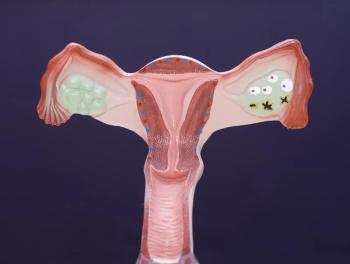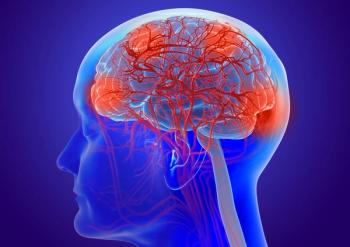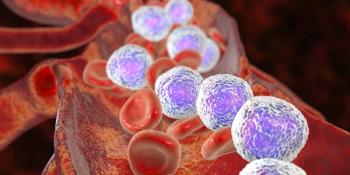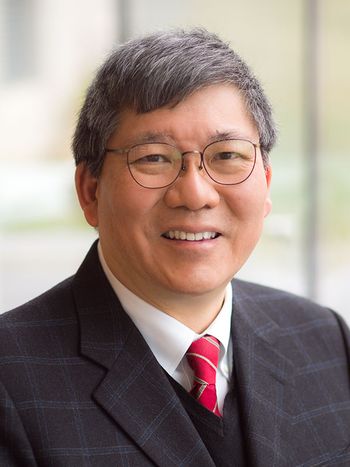
- ONCOLOGY Vol 27 No 4
- Volume 27
- Issue 4
Treatment of Anaplastic Oligodendrogliomas: Should Resources Be Used to Codify the Old or to Create the New?
A turning point in therapy followed the observation that patients with AO tumors with chromosome 1p and 19q codeletion had better outcomes when treated with irradiation and PCV than did non-codeleted anaplastic oligodendroglioma patients.
This thoughtful and concise article by Mark Anderson and Mark Gilbert captures the essence of our understanding of the molecular/genetic underpinnings of the differential response of anaplastic oligodendroglioma (AO) tumors to irradiation and alkylating agent chemotherapy.
Many of us have treated AO patients with surgery, external beam radiation therapy (EBRT), and, for decades, adjuvant post-EBRT PCV (procarbazine [Matulane], lomustine [CeeNU], and vincristine) for 1 year. A turning point in therapy followed the observation that patients with AO tumors with chromosome 1p and 19q codeletion had better outcomes when treated with irradiation and PCV than did non-codeleted AO patients.[1] This raised the hope that one could prevent or put off the use of EBRT with chemotherapy. It also led many clinicians to use less toxic temozolomide (Temodar) instead of PCV, hoping it would work as well as the PCV-a question that remains open but that might be considered moot were our need for new agents squarely addressed.
Over the past decade, the quest for evidence-based treatments led to large controlled trials in rare AO patients that were initiated through cooperative groups in North America and Europe to codify best practices. I question whether this direction is the most effective use of our research dollars. Consider that surgery, EBRT, and alkylating-agent chemotherapy are all effective in the treatment of AO, and that even varying the order of these treatments, for many patients, might lead to similar outcomes.[2] The second problem for clinicians has been the variability of overall survival (OS) for AO patients in the literature. It is one thing to design a trial where the median OS is 2 years, and another if it is more than 7 years.[2-7] In the latter case, achieving statistical significance by log-rank test, which requires that events (progression or death) occur in more than 50% of patients, could mean that in many AO studies, follow-up exceeding 10 years would be needed. Hence, large multi-arm studies could take 7 years to accrue and another decade to follow to attain statistical certainty. I believe that this problem should be regarded as an opportunity to develop different clinical trial designs and acceptable statistical tests.
Another problem is that, after my 40 years of practice, we still have basically two types of chemotherapy options: bifunctional alkylating agents that cross-link DNA (lomustine, carmustine [BiCNU]) and mono-functional alkylating agents (procarbazine, temozolomide [Temodar]) that attach to one strand of DNA. This also means that the molecular/genetic research database we rely on today is, in part, limited in that it primarily reflects outcomes determined by alkylating agents and irradiation. It remains unclear what the most promising AO tumor cell targets are and what new drugs and chemical entities will be needed to modulate these targets and to increase the potential for cure and reduce the side effects of treatment. In addition, even the development of drug combinations that might surpass PCV and temozolomide is at a stand-still. Why is this so?
I believe that these issues have as their root cause a complex dynamic in need of change. Currently, this comprises: (1) insufficient investigator dissatisfaction with the status quo; (2) a large number of constrictive government requirements for the conduct of clinical trials, with excessively high costs to academia; (3) an unclear path to new drug discovery/development; and (4) the belief of the pharmaceutical industry that there is no viable pharmacologic or economic path to new therapies for gliomas. One byproduct of these factors, at least for anaplastic gliomas, is the general insistence that log-rank differences in OS should remain the holy grail of evidence-based medicine. I believe that this makes the development of new therapeutic strategies for gliomas, especially strategies involving targeted, potentially cytostatic drugs, problematic to conduct for reasons of both time and costs. One could even argue that, given the improving survival of AO patients, insistence on the use of OS and the log-rank test is also a disincentive for our pharmaceutical partners to invest effort and resources to help address the need for new targets and agents in AO. I believe it incumbent on our neuro-oncology community to work with statisticians, pharmaceutical companies, philanthropic groups, and our government regulatory bodies to develop more robust strategies. Maybe we will find that an approach such as utilizing segmented hazard ratios,[8] Bayesian adaptive designs,[9] or other statistical designs will allow shorter study designs still sufficiently rigorous to justify regulatory approval. We may also need to incentivize industrial participation through changes to the regulatory environment for orphan drugs and consider coupling the number of years of licensing exclusivity to outcome gains; for instance, adding 3 months to OS may be worth 3 years of exclusivity, while adding 24 months may be worth 10 years. My hope is that new efforts will allow the neuro-oncology community and its stakeholders to raise the therapy bar and provide the new therapies and drug combinations that our patients so urgently need.
Financial Disclosure: The author has no significant financial interest or other relationship with the manufacturers of any products or providers of any service mentioned in this article.
References:
REFERENCES
1. Cairncross JG, Ueki K, Zlatescu MC, et al. Specific genetic predictors of chemotherapeutic response and survival in patients with anaplastic oligodendrogliomas. J Natl Cancer Inst. 1998;90:1473-9.
2. Puduvalli VK, Hashmi M, McAllister LD, et al. Anaplastic oligodendrogliomas: prognostic factors for tumor recurrence and survival. Oncology. 2003;65:259-66.
3. Cairncross G, Berkey B, Shaw E, et al. Phase III trial of chemotherapy plus radiotherapy compared with radiotherapy alone for pure and mixed anaplastic oligodendroglioma: Intergroup Radiation Therapy Oncology Group Trial 9402. J Clin Oncol. 2006;24:2707-14.
4. van den Bent MJ, Carpentier AF, Brandes AA, et al. Adjuvant procarbazine, lomustine, and vincristine improves progression-free survival but not overall survival in newly diagnosed anaplastic oligodendrogliomas and oligoastrocytomas: a randomized European Organisation for Research and Treatment of Cancer phase III trial. J Clin Oncol. 2006;24:2715-22.
5. Lebrun C, Fontaine D, Ramaioli A, et al. Long-term outcome of oligodendrogliomas. Neurology. 2004;62:1783-7.
6. Winger MJ, Macdonald DR, Cairncross JG. Supratentorial anaplastic gliomas in adults: the prognostic importance of extent of resection and prior low-grade glioma. J Neurosurg. 1989;71:487-93.
7. Shaw EG, Scheithauer B, O’Fallon JR. Astrocytomas (A), oligo-astrocytomas (OA), and oligodendrogliomas (O): a comparative survival study. Neurology. 1992;42:342.
8. Levin VA, Hess KR, Choucair A, et al. Phase III randomized study of postradiotherapy chemotherapy with combination alpha-difluoromethylornithine-PCV versus PCV for anaplastic gliomas. Clin Cancer Res. 2003;9:981-90.
9. Trippa L, Lee EQ, Wen PY, et al. Bayesian adaptive randomized trial design for patients with recurrent glioblastoma. J Clin Oncol. 2012;30:3258-63.
Articles in this issue
over 12 years ago
Oligodendrogliomas: Questions Answered, Answers Questionedover 12 years ago
Accelerated Partial-Breast Irradiation: Does the Evidence Stack Up?over 12 years ago
The State of Prostate MRI in 2013: Into the Breachover 12 years ago
Multiparametric MRI: Standardizations Neededover 12 years ago
Management of Recurrent EOC: The State of the ArtNewsletter
Stay up to date on recent advances in the multidisciplinary approach to cancer.


















































































